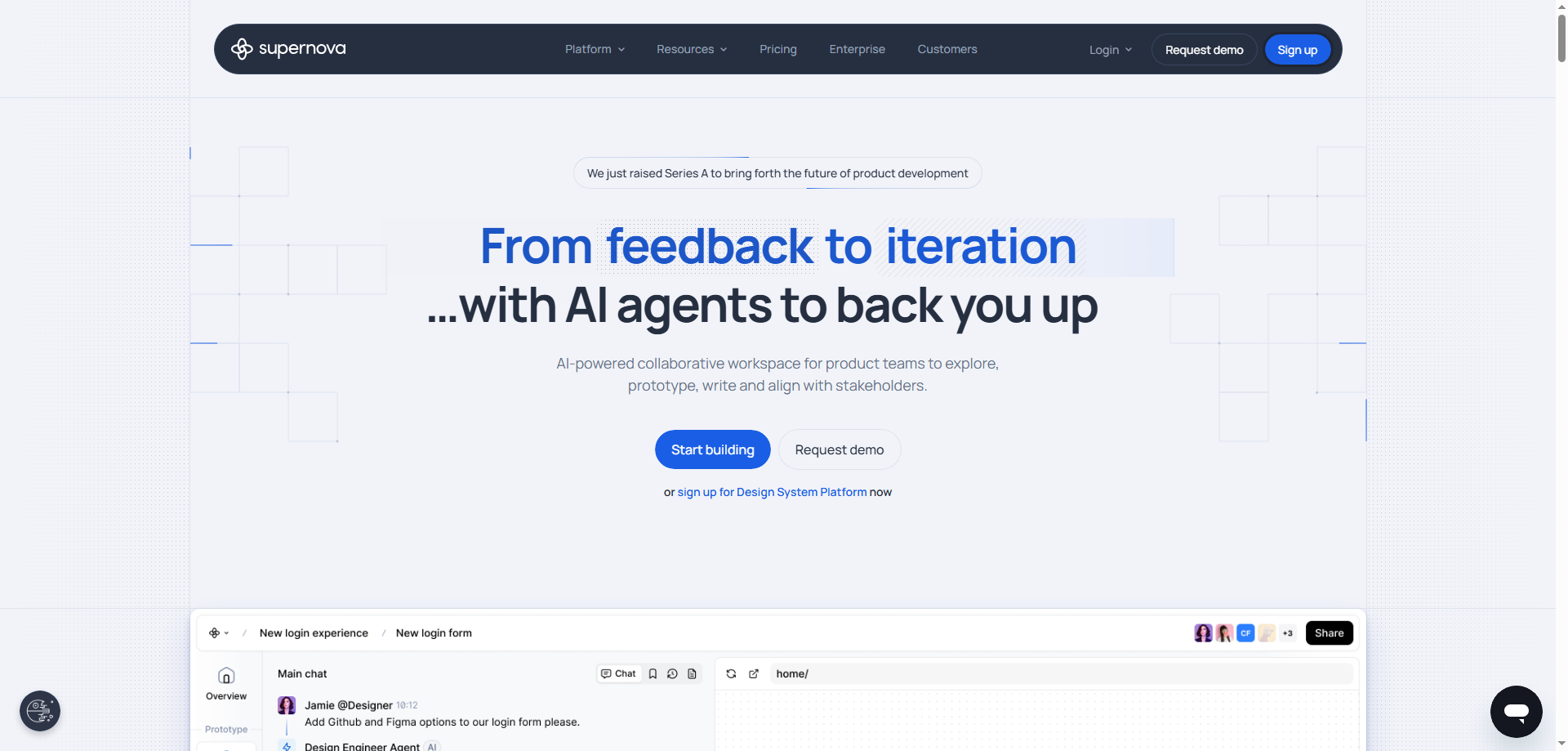1) Creative angle: how I turn ideas into shipped features
Supernova.io feels like a studio for product work. I storyboard a feature from spark → spec → design → dev handoff inside one design-to-code delivery platform. I keep my product documentation management next to mockups, map user stories into tasks, and wire design system integration so components stay consistent. Because the whole flow lives together, PM–designer–engineer collaboration becomes part of the canvas, not an afterthought. My loop: capture a rough idea, drop in a lightweight doc, link designs, publish reusable tokens, and track comments until we hit “merge.” As a product manager productivity tool, it nudges me toward fast feature delivery without sacrificing brand or quality.
2) Disruptive angle: can it replace what I use today?
Mostly, it compresses the stack I’ve been juggling.
What Supernova.io can replace for me
- Scattershot docs + handoff plugins with a single product management collaboration tool.
- Design specs in slides and ad-hoc feedback threads with structured reviews.
- Basic handoff glue by tying design system integration to live component standards.
What I still keep
- My code repo, CI/CD, and deep analytics.
- Dedicated bug trackers for heavy QA.
Net-net: it won’t kill every tool, but as a design-to-code delivery platform that centralizes specs, assets, and decisions, it removes painful context switching and speeds dev team collaboration.
3) Exact-need angle: will people actually adopt it?
I think yes—especially teams that ship often and hate drift.
- Startups & feature squads: need fast feature delivery plus traceable decisions.
- Design-system teams: want strict design system integration and reusable tokens.
- Cross-functional groups: crave tidy product documentation management that travels with the work.
Signals I look for: fewer Slack pings for “source of truth,” cleaner handoffs, and less rework. When product manager, designer, engineer collaboration happens in one place, adoption sticks because velocity rises without chaos.
4) 12-month survival score: 4.2 / 5 stars
Verdict: Strong odds Supernova.io grows over the next year. It lands where teams feel real pain—handoff friction, scattered specs, and misaligned components—and translates that into measurable dev team collaboration and fast feature delivery.
Opportunities
- Deeper repo links and design-token pipelines to harden design system integration.
- Templates/playbooks to standardize discovery → spec → delivery for repeatable wins.
- Rich analytics tying docs, reviews, and cycle time to outcomes.
Risks
- Overlap with existing suites can trigger “we already have a tool for that.”
- Complex enterprises may demand heavier governance and role controls.
- Change-management fatigue if teams migrate mid-project.
What would lift it to 4.6–4.8
- Bulletproof permissions/versioning, tighter PR/work item sync, and automated drift alerts between designs and code—turning it into a true product iteration powerhouse.
Why I’m in
Supernova.io gives me a focused product management collaboration tool that keeps specs, designs, and delivery aligned. With first-class product documentation management, real design system integration, and smoother PM–designer–engineer collaboration, I ship with confidence—and I ship faster.









